Hypertension is a disease that results in periodic or constant growth of blood pressure (blood pressure).For some people, the increased pressure is the norm, but this is the exception of the rules and the indicators mentioned to most people are abnormal.
Causes and mechanism of high blood pressure development
For a healthy person, the pressure is normal about 120/80 mm Hg.Art.At the physiological and chemical level, the increasing pressure of the body is a natural reaction to any danger or stress.In a critical situation, adrenaline is thrown into the blood, the heart works faster, the blood vessels are narrow, the muscles are contracted, and the pressure increases.
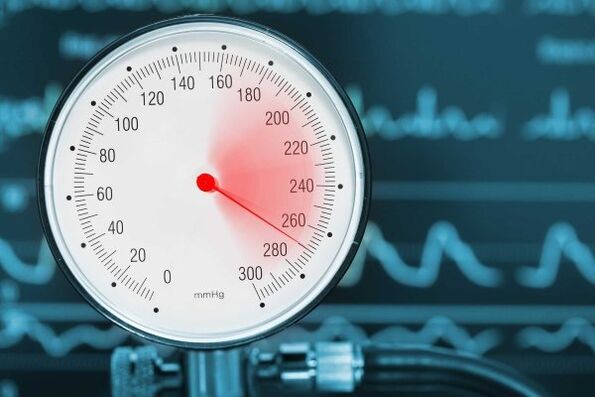
Regular stress, experience, lack of sleep, problems - all of this can lead to chronic pressure.However, doctors also call other causes of hypertension: inheritance, overweight or obesity, thyroid disorders, kidneys, body magnesium deficiency, taking some medications.
The pathogenesis of hypertension is unclear.The hemodynamic basis for increasing blood pressure is the increased collision tone, which is achieved along the sympathetic paths due to the nerve impulses from the central nervous system.
In addition to the neurogenic mechanism, other mechanisms that increase blood pressure, especially humorous, can also be turned on (succession) humorous.
The kidney factor related to acute ischemia is also important.The installation of the kidney factor contributes to the development of high and stable blood pressure.In the complex pathogenetic mechanism of hypertension, the well -known role is played by the hormones of the cortical layer of the adrenal gland.
Thus, two groups of factors can be distinguished in the mechanism of increasing hypertension: neurogenic, which through the sympathetic nervous system has a direct effect on the sound of arterioles, and humorous, increased secretion of catecholamines and increased secretion of other biological active substances.
The mechanism of the development of hypertension is complicated.It involves many organs and systems.In the case of hypertension, the degree of damage to various organs may be unequal, so many clinical and anatomical variants of hypertension can be distinguished: the dominant damage to the vessels of the kidneys, the heart and the brain.
Symptoms
Arterial pressure is the blood pressure, which depends on the constant shock of the heart, which performs the function of the pump.It gives an abbreviation of about 70-90 per minute.By measuring blood pressure, two digits are considered: systolic pressure (at the moment of the heart muscle contraction) and diastolic pressure (at the time of relaxation).Arterial hypertension is usually called pressure growth by 140 90.
In addition to increased pressure, many of these properties can be observed:
- headache, noise in the ear;
- visual disorders;
- dizziness;
- missing;
- Memory deterioration;
- drowsiness;
- instability of blood pressure;
- nausea;
- chills;
- swelling of the eyelids, bloating of the face in the morning;
- the heartbeat of the heart;
- chills, sweating, pulsation in the head;
- Redness of the face, internal tension, anxiety, irritability;
- decrease in power;
- swelling of the limbs, numbness of the fingers;
- Pain in the heart.
If one of these symptoms is observed from time to time, this is not evidence of increased pressure.But if you notice the chronic presence of the signs, seek medical attention.
The most common sign of the disease is headache.The second most important symptom of increased pressure is the problems of visual perception:
- Hanging in his eyes;
- explaining objects;
- decrease in peripheral vision;
- blinds;
- fog before my eyes;
- Reducing the reaction to the light.
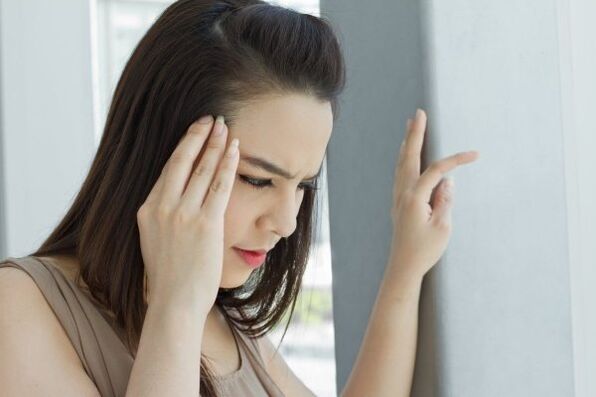
Hypertension and hypertension: What is the difference?
Hypertension is a chronic disease that involves prolonged and persistent hypertension, and hypertension is a lasting increase in blood pressure (that is, not a diagnosis but body condition).In fact, these terms are the same, only the first denotes the name of the disease and the second is the fact of increasing blood pressure.
Hypertension of hypertension is characterized by current characteristics.While hypertension is an independent disease, arterial hypertension is a symptom of abnormal condition that manifests itself exactly as the pressure increases.
So to say that this is one and the same, only in the case of a hypertension crisis.The crisis itself is characterized by the continuous increase in pressure (hypertension) and, at the same time due to hypertension.
Sections of hypertension
For doctors, the stage of hypertension in the patient should be determined for the right diagnosis and properly recorded in the medical card.If hypertension is diagnosed late in the patient, that is, in Section 2 or 3, the consequences of the patient's body will be more serious than if the treatment of hypertension began in the first stage.Nevertheless, few hypertension patients seek medical attention in the initial stages or at least regularly measures blood pressure.
The first stage
140-150/90 mm Hg.Art.When arterial pressure fluctuates within these limits, the patient is diagnosed with the first (light) hypertension.Hypertension crises are rarely occurring, the disease is not minor.
The second stage
160-170/100-109 hg.Art.- The second (medium) degree of hypertension.Hypertonic crises are typical.The narrowing of the retina arteries and the hypertrophy of the left ventricle is objectively fixed.
The third stage
200-300/129 mm Hg.Art.And above.Severe hypertensive crises (a very severe form of hypertension) are often developed.The harmful effect is hypertensive encephalopathy, levo -Ventricular deficiency, formation of cerebral blood vessels, hemorrhoids and optic nerve edema, as well as renal failure and kidney failure.
Why is high blood pressure dangerous?
Doctors claim that the consequences of hypertension threaten to life, such as AIDS, cancer and tuberculosis together.The misleading of this disease is that its symptoms are similar to signs of normal overtime.Therefore, about half of the hypertension about their illness will learn too late when it is very difficult to treat and it is almost impossible to stop the process of destroying the launched body.
The risk of hypertension is that it begins with violation of the function of blood pressure, but in the future will lead to many serious diseases of internal organs and systems, especially cardiovascular disease.Hypertension without medical control can lead to heart attack, heart and ultimately heart failure.
The consequences of hypertension are particularly dangerous for those who have harmful factors with increased blood pressure - smoking - alcohol consumption, unhealthy nutrition, sedentary lifestyle, frequent stress, high cholesterol, body and diabetes.Such people increase the risk of heart attack, stroke and kidney failure, blindness and various cognitive disorders - memory reduction, intelligence and performance.
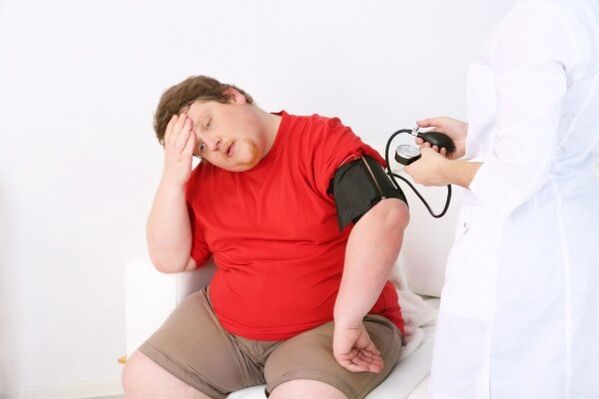
High blood pressure is a killer No. 1 of all cardiovascular diseases.Death has grown from 98 to 100 / 100,000 in the last 25 years.This is a noticeable growth.50% of patients are treated quite efficiently, but only 10% reach the target level of blood pressure, ie 130 below 80.
Which doctor deals with treatment?
You must go to a specialist under increased pressure.The therapist performs the patient's preliminary examination, performs the necessary tests and determines which doctor is going to turn.This feature is explained by the fact that the therapist is at the same time a specialist in the field of medicine.
After completion of the preliminary check, the doctor will give a referral to check other professionals:
- neurologist;
- Cardiologist;
- nephrologist;
- Oculist;
- Endocrinologist.
Diagnosis
The simplest diagnostic method is the measurement of blood pressure.If stable growth is 140/90 mm Hg.Art.And above, that means there is hypertension.
Increased pressure is considered stable during repeated measurements (at least 2-3 times on different days 4 weeks).
The following diagnostic methods are also used to determine the presence of hypertension:
- Urine analysis of protein and glucose;
- hemoglobin or hematocritone;
- Determination of creatinine levels or growth of nitrogen in the blood and urine;
- glucose level during starvation;
- electrocardiogram;
- Ultrasound of the heart, kidneys;
- Optometrist consultation by studying bloody lower vessels.
Measurement of blood pressure
Blood pressure measurement with hand tonometer (Korotkov method):
- The tonometer cuff should be 2 cm above the elbow at the heart level (in the middle of the chest).The finger must cross the Nemple cuff and the hand.The cuff should cover at least 80% and at least 40% of the shoulder perimeter.
- Place the phonondoscope membrane on the pulse point of the shoulder artery.
- Pump the air quickly with a pear on the cuff (do not forget to close the valve in advance) to prevent the air from returning to the upper pressure level, 20 mm hg.Art.Over -to -systolic (according to the disappearance of the pulse).
- Slowly release the air from a cuff at 2 mm hg.Art.SEC. The first blow heard is equivalent to the value of the upper pressure.The level of sound stops corresponds to the lower pressure.If the sounds are very weak, you need to raise your hands, bend and straighten it several times and repeat the measurement.
Blood and urine tests
General blood pressure or urine testing will not be informative.It is impossible to determine the cause of the disease with such indicators, but they help to get to know the stage of the disease.
You can learn about the number of shapes from a general blood test and assess the presence of inflammatory processes in the body.
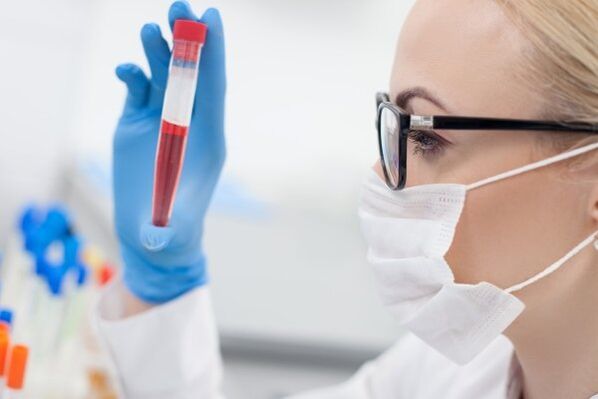
To evaluate the work of the heart
There are many methods to evaluate the work of the heart:
- Physical diagnosis involves a heart muscle examination with a phonondoscope.The doctor "listens" his heart, reveals the disturbance of noise and rhythm.Based on the results of physical diagnostics, ECG is prescribed.
- ECG (electrocardiogram) is also evaluating myocardium work, but more detailed.Such a study allows you to identify possible changes and complete analysis of the heart work for a certain period of time.
- Dopplerography is an effective ultrasound examination to help determine the condition of the blood passing through the vessels.
- Arteriography is a radiological method that assesses the condition of arterial walls, explores atheromatic plaques and arterial errors.
Checking the bottom of the eye
Eyes, like the heart, are considered to be a target organ with hypertension, so they examine the eyes of the ifalmologist.As a general rule, hypertension is expanded in the initial stages of retinal veins and artery narrowing.These functional changes can be reversed: the blood vessels also return by normalizing pressure.
In the second phase, organic changes occur and the condition deteriorates.Microanevrises appear, bleeding can occur.
In the third stage, changes in the optic nerve, sharpness and visual field deteriorate, and visual functions are interrupted.
Ultrasound
Ultrasound of the kidneys and adrenal glands evaluate the work of the kidneys.Due to the increased pressure of the organs, nephrons provide cells that filter daily blood litches from toxins.In the end, this can lead to kidney failure.
The ultrasound of the kidneys helps identify the volume formations of the adrenal glands, the severe lesions of the kidney.The ultrasound of kidney arteries is also prescribed.
How to treat hypertension?
No -drog methods:
- reduction of body weight to normal;
- Denial of smoking;
- decrease in alcoholic beverages;
- moderate physical activity (regular walks in fresh air);
- reducing salt consumption;
- an increase in diets of plant foods rich in calcium, magnesium and potassium;
- Reducing the consumption of animal fats.
Therapy is prescribed when non -valleys have no effect or the patient has risk factors for the development of diabetes, hypertensive crisis, kidney damage and coronary arterosclerosis.
Drugs
Hypertension drugs have been developing for more than a dozen years.But nowadays, the problem of developing new, more efficient and safer tools to reduce and control pressure remains in medicine and pharmacology.
Nowadays, there is the widest selection of such drugs, but each is different from exposure, efficiency, indications and contraindications.Their cost plays an important role.Therefore, for each patient, the doctor chooses the individual schema of drug treatment of hypertension, which is primarily based on the cause of its occurrence:
- Diuretics.These drugs partially block calcium channels and have vasodilator.We recommend them if there are vascular diseases at the same time with hypertension, but the tools are contraindicated for those who have undergone myocardial infarction.
- ACE inhibitors (angiotensinoprofing enzyme).Reduce the production of an enzyme that stimulates a reduction in blood vessels.They are very effective, well tolerated patients with hypertension, and have a positive effect on the cardiovascular system.They are often recommended after a myocardial infarction and increased pressure against the background of diabetes.
- Beta-Adrenos.Reduce heart rate and reduce their strength.They have a widespread application and, after a heart attack, is recommended for the background of heart failure for angina pectoris, tachycardia.
- Medicines to reduce emergency pressure.This includes the withdrawal of Motherwort, Valerian, peony root.
Diet
The special product of hypertension is fried potatoes.This product is rich in potassium in the most important trace element that regulates water-stimulated metabolism in the body.
The main nutritional elements of hypertension are potassium, calcium, magnesium.These trace elements greatly contribute to a decrease in blood pressure.
The diet of hypertension means that fast food products are rejected, which are usually overloaded with sodium and promotes pressure to increase pressure.In addition, the diet should be saturated with products that are rich in calcium and magnesium:
- Cereal - bread, rice, solid varieties of wheat;
- Dried fruits and plate vegetables;
- low fatty meat and poultry;
- Low fatty dairy products;
- Nuts and legumes.
Treat fatty foods as well as sweets with great caution.
Doctors claim that adherence to the diet promotes maintaining pressure within normal limits, thus reducing the risk of stroke by almost 40%and heart attack by 30%.
Life
All patients with blood pressure are higher than 120-130, 80-64 hg hg.Art.You need to change their familiar lifestyles and nutrition urgently.This consists of restricting smoking and alcohol consumption, a proper compilation of the entire ordered diet and physical exercises.
One of the main factors of effective treatment is the healthy lifestyle of hypertension, as with any chronic illness.Therefore, changes are considered a critical step in the treatment process and in preventing arterial hypertension.
Folk medicines
Most high blood pressure patients are taking special medicines, but well -known folk drugs can also fight the disease.Take some effective recipes:
- Linseed.They contain large amounts of fatty acids from the Omega-3 group.They contribute to the increase in the level of increased density lipoproteins in the blood, which is the prevention of cholesterol growth and the formation of atherosclerotic complications on the walls of the blood vessels.The body alone cannot synthesize this material, so it is important to ensure that it is associated with food.In linen seeds, the amount of omega -3 is 25% of the weight, plus they are relatively cheap and are well absorbed.Take 3 tablespoons of canvas seeds a day in chopped form.
- The tincture of the red pine boxes.It helps to normalize blood pressure and set up subsequent values.The tincture is made like this:
- Collect ingredients during the summer months, rinse under running water and pour into a liter of dish;
- Pour vodka or 40 degrees of alcohol, then place in a dark place;
- Stick at 2-3 weeks at room temperature;
- Before you start taking it, filter through the gauze, doubled.
- The properly prepared tincture must be dark red.Take three times a day before meals on a teaspoon.Can mix with water or tea.
- Garlic.If you take the garlic regularly, it stimulates bloodstream bloodstream, preventing the walls of oxidative degid degradation.The tight fried properties of the garlic help prevent blood clots.Constant use of garlic clove reduces blood pressure by 7-8%.
- Two garlic teeth are thinly cut and pour a glass of cooked water;
- Let it cook for 12 hours;
- Drink in the morning and make a new infusion.
- The course is one month.Take a glass twice a day.
- Lemon with cranberries and honey.Grate the lemon and mix with the spoon with a spoonful of cranberries.Add half a tablespoon of a fresh lace of the ground, a glass of honey, and buy a tablespoon of product in the morning and evening.
- Plantain.Take 4 tablespoons of crushed plantain leaves.Pour a glass of vodka and let the composition cook for two weeks in a dark place.Filter the mixture and use 30 drops three times a day.
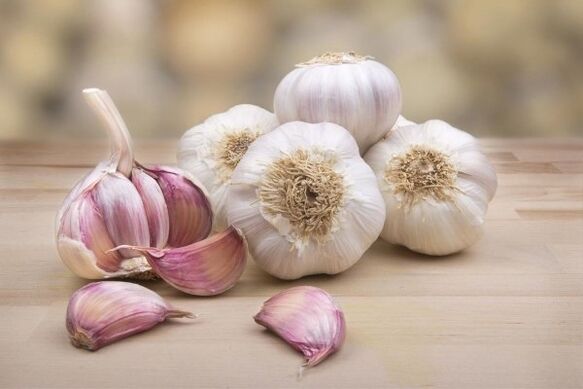
You can also cook garlic infusion:
Forecast
The forecast of hypertension in the sense of absolute healing is generally unfavorable.Only at the transistor stage is to complete the further development of the disease.However, modern treatment methods allow for slowing down the progress of the disease, preventing complications, alleviating the condition of the patients and their long -term maintained ability.
The forecast for the kidney version of the course is very unfavorable, especially when kidney arteriolosclerosis develops.The prediction is exacerbated by the connection of atherosclerosis at any stage of hypertension.
Prevention measures for hypertension
Prevention of hypertension is divided into primary and secondary.Primary prevention needs healthy - those whose pressure is not yet exceeding normal numbers.The complex of the following healing measures not only helps for many years in the normal state of pressure, but also to significantly improve excessive weight and significantly improve general prosperity:
- Low pale diet;
- Restriction of animal fats;
- exercise;
- psychological unloading;
- rejection of bad habits;
- weight control.
The purpose of secondary measures is to maintain normal blood pressure in the hypertensive patients, to exclude hypertensive crises and to prevent complications of the disease.Secondary prevention-for moral and emotional unloading, physiotherapy procedures, treatment in sanatoriums, sleep improvement, inserting psychological training for traditional medicine (Hawthorn, peony, mothers) and daily pressure indicators.
If you look at high blood pressure on time and start treating it, you can avoid serious consequences.Pressure problems are solved not only by drugs, but also due to a healthy and good lifestyle and health control.






















